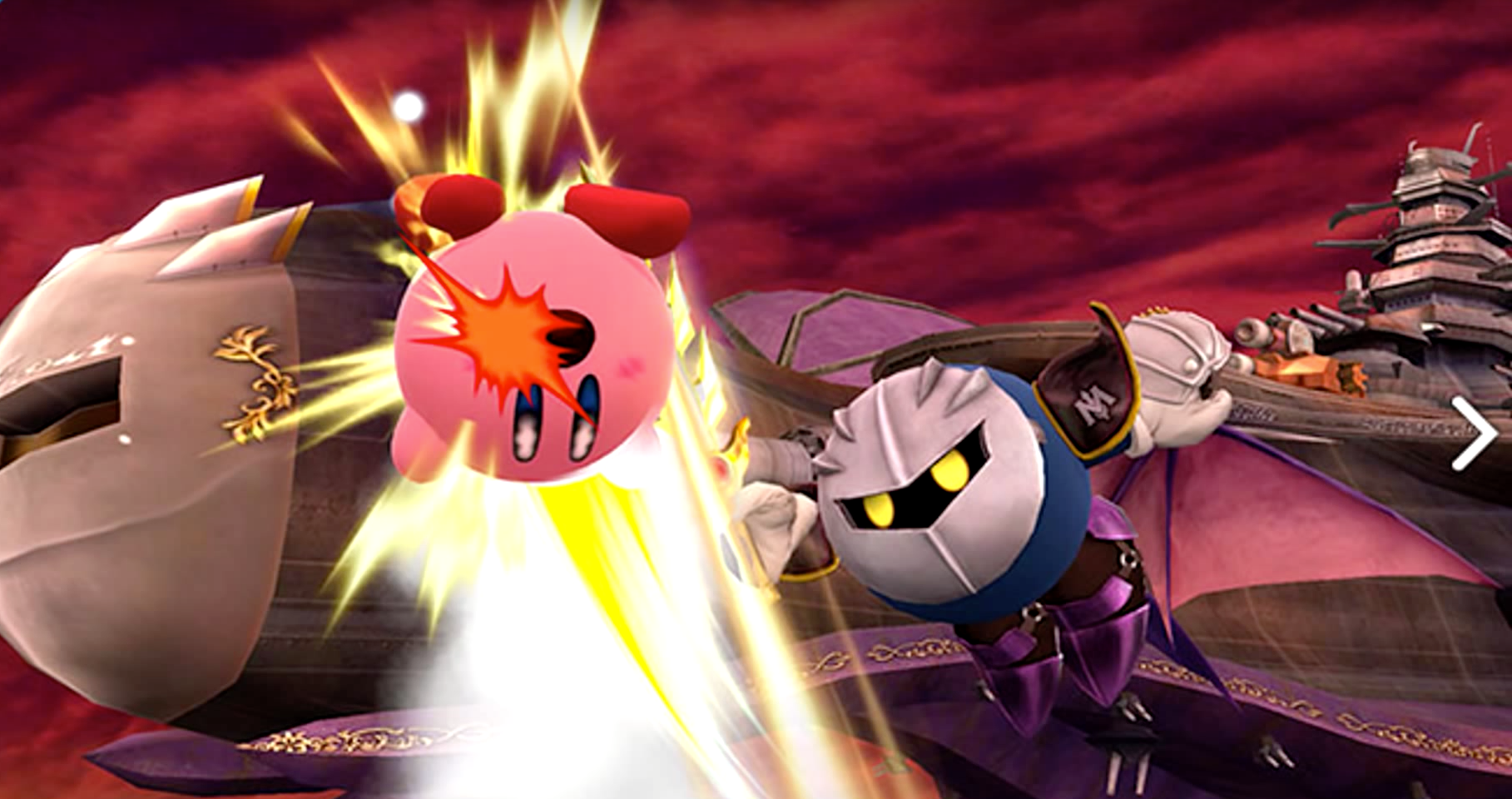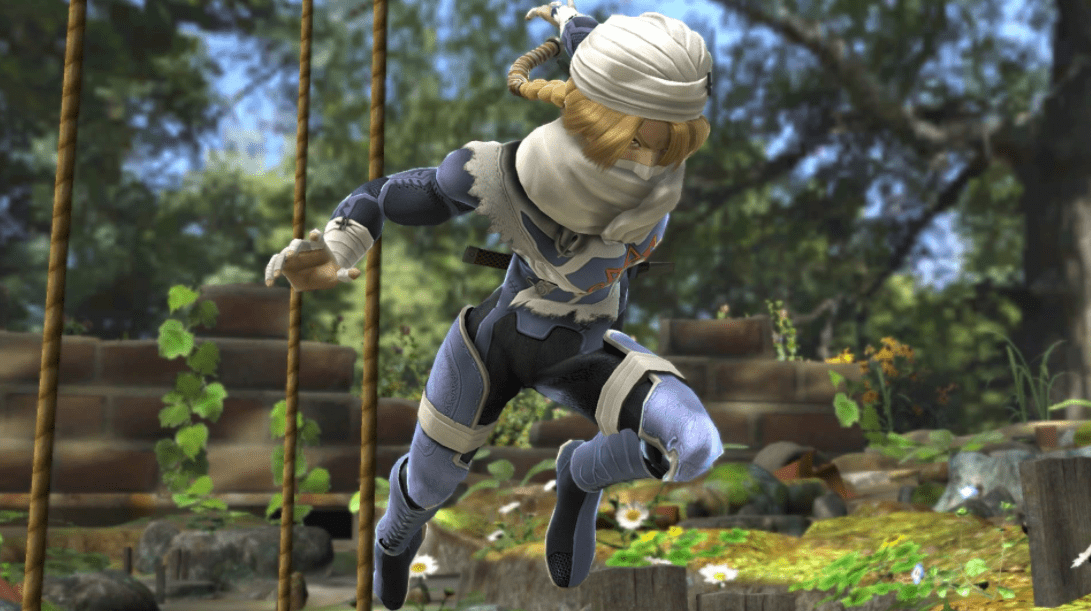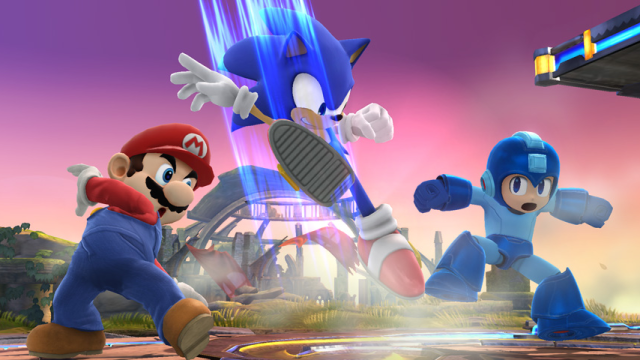Smash 4
Earlier this week, Smash 4‘s top player admitted he was overwhelmed: “We really need an off season,” Gonzalo “Zero” Barrios wrote on Twitter. “Committed players are travelling the whole year [with] no breaks.” The conversation snowballed. Fans, tournament organisers and fellow players noted that, to organise an off season, the anarchic Smash 4 community would need a governing body.
“If I were you,” a Smash event organiser told Barrios, “I would band together with some folks and say ‘We are only going to attend x events’ and that gives them power.”
“A union is what you mean,” Barrios said.
Carving out a living as a pro Smash 4 player takes grit. Unlike the makers of most games with esports scenes, Smash 4‘s publisher Nintendo is hands-off. That means the scene can grow organically, but also, Daddy Warbucks isn’t raining down money or maintaining standards for the pro scene.
Smash 4 has no central governing body. As the game begins to grow as an esport, with Smash players earning a total of $US815,000 ($1,087,032) as of 2017, tournament organisers are riding on the game’s hype by holding events all year long. For players, that means no breaks.
In an email, Barrios told me that he travels three days a week to hit near-weekly tournaments around the world. Not attending means missing out on global ranking points, which sponsors pay close attention to, and on tournament winnings — a major source of income for players without a big online presence.
“The whole point is that you can not attend, but then that hurts your standing in the community, and your opportunities, so then you feel forced to go, and then you become burnt out because of the process repeating,” Barrios said.
“Every serious sport or competitive something has an off season. You don’t see people competing every single weekend all year,” he added. For comparison, League of Legends pros have at least one month off-season each year.

Smash 4
Esports consultant Trent Murray saw the Twitter conversation between Barrios and his fans. Until recently, Murray was a writer for Riot and covered the League of Legends Championship Series.
In January 2016, at the Genesis 3 Smash 4 tournament, he recalibrated his career after watching Barrios face off against Samuel “Dabuz” Buzby in the finals. The more he studied Smash 4‘s scrappy pro scene, the more he noticed areas where it could benefit from League of Legends‘ professionalism. He wrote a post on his blog, “So You Want To Make A Union,” after noticing Barrios’ tweets.
Murray suggested going one of two routes: either tournament organisers and influencers should organise or players could unionise and force change. The union, he said, would protect players from tournament oversaturation and erratic payout structures. Murray wrote:
“Let’s take the example of an offseason. Let’s say that the union determined that players needed one month out of the year where no tournaments could count for rankings or have significant prize support. The union would discuss and vote on how that would be structured. Representatives would meet with major TOs [tournament organisers] and the PGR [rankings] crew to discuss their concerns. Then, the union would issue a statement and create a bylaw for its members.
The bylaw would state that all players within the union agree to not attend any tournament during that month that offers a pot bonus over $US1000 ($1,334), or awards PGR ranking consideration. If the union remained strong and held to this bylaw, no TO or rankings organisation would bother breaking it because their tournament would be guaranteed to fail.”
Murray went on to estimate that, for a union to work, at least 80 per cent of top players must agree to join. In an email, Barrios said he would join and is “sure others would join if the movement was serious.”

Smash 4
So-called “unions” aren’t new to esports — “so-called” because “union” means “players’ association” in esports. Since 2015, pro gamers have been organising to fight for their rights within the ballooning esports industry, which back then, was already worth $US750 ($1,000) million. In the grand scheme of decision-making, players are at the bottom of the food chain after game publishers, tournament organisers, teams and sponsors.
So, in 2016, the Electronic Sports League, which hosts tournaments ranging from Counter-Strike: Global Offensive to Hearthstone, founded the World Esports Association (WESA), an association that represents players. Shortly after its founding, the WESA faced controversy when esports team Faze Clan, in its attempt to leave the organisation, reported that they were offered $US150,000 ($200,067) to join, which they never received, and the fee to leave was apparently $US50,000 ($66,689) higher.
WESA does represent a few Smash players, but the majority of professionals in Smash are not currently part of any association or guild.
The issue with forming a Smash 4 “union” is that labour unions are regional. Smash 4 pros are scattered around the world. Mona Ibrahim, senior associate at the Interactive Entertainment Law Group, explained that a union probably wouldn’t be the best route for Smash 4 players. A players’ association or a guild, organised under a nonprofit, is much more feasible.
Another issue is how that association would help negotiate fair contracts — are there lawyers involved? — or help lay the groundwork for quality of life standards. “It’s not so much about unionization, it’s that the industry as a whole needs to examine its infrastructure and migrate towards something more professional,” Ibrahim said. “Right now, I think a lot of players represent themselves, so it’s easy to take advantage of them.”
Tournament organisers, of course, aren’t entirely to blame for Smash‘s hectic schedule. They too are exhausted, according to Smash 4 tournament organiser Alex “Vayseth” Varga.
It’s all a battle for relevance, he explains: “Everyone is exhausted and we are all working as hard as we can to stay relevant. If organisers do not host large events they risk falling from relevancy. If players do not go to every ranking eligible event they risk going down in the rankings.”
Smash 4 needs an off-season. I’m seeing burnout from players.
— Bear ? #CB2017 (@BearUNLV) May 4, 2017
@C9AlIy I know. pic.twitter.com/PNoeffLsUG
— Bear ? #CB2017 (@BearUNLV) May 4, 2017
With Smash 4 making its Sunday night debut at EVO 2017 soon, it’s time for its pro scene to govern itself in a way worthy of the game’s rising prominence. A players’ association could help hammer out a structured and centralised event circuit, but also, help retain the welcoming and open ethos the community is known for. And, with tournaments like CEO Dreamland netting a $US20,000 ($26,676) loss, it might be best for organisers to slow their roll, too — as long as pros can still make ends meet.
Smash 4 players do make a living playing video games, which, probably, is what they have always wanted. That makes them easy targets for exploitation, For tournament organisers, team owners and investors, weekly tournaments mean constant revenue. A majority of top players would have to stand up and boycott, risking everything they have done to get this far. “These players are living their dreams,” Ibrahim said. “They will kill themselves to do it. That’s how exploitation works in this industry.”

Comments
5 responses to “Burnt-Out Smash Pros Are Talking About Unionising”
Not going to lie, I didn’t read the whole article but said pros could just decide to not attend every tournament? Sounds like they have FOMO issues to me. I’m sure they could take a week or two off every couple of months for their own personal well-being. What’s a couple of smaller tournaments here and there? The world would not cave in for anyone as a result.
Yeah read the whole article. Your point is void.
My full support for unionising.
Needs widespread support to work effectively too.
Pressure, threats and cuts to incomes by the exploiter class, should be met with firm resistance.
This is a weird time to be alive. That’s what i got out of this article.
Professional video game players want a holiday?